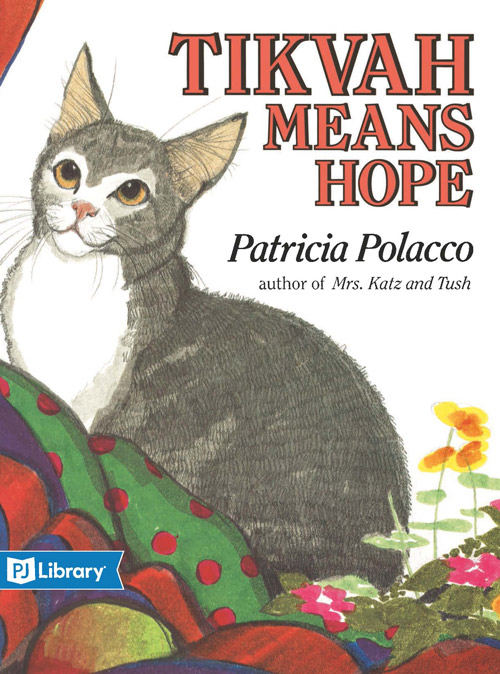
Where do we find hope? The weeklong holiday of Sukkot is all about giving thanks — for an abundant harvest, for safe shelter, and for friends and family. Sukkot also features a sukkah, the simple hut reminiscent of our nomadic ancestors’ dwellings. During Sukkot, people eat, entertain, and sometimes even sleep in a sukkah. A sukkah reminds us that we are vulnerable: Wind can blow through its walls, and rain can fall through its thatched roof. Those fragile moments are when we need tikvah (Hebrew for “hope”) the most.
The PJ Library book Tikvah Means Hope, written and illustrated by Patricia Polacco, highlights how people are connected in good times (like building a sukkah with neighbors) and bad. When fire breaks out, people in this community help each other pull through. Getting involved in your community is a Jewish value. As it says in Pirkei Avot (Ethics of the Ancestors, an ancient collection of rabbinic writings), “Do not separate yourself from the community.” We humans are at our best when we work with, and for, one another. To learn more, use the sections below to find family discussion prompts, activity ideas, and more.
Learn
The Hebrew word for hope, tikvah, is connected to the word kav, or “line” in English. The Israeli national anthem is aptly called Hatikvah, “The Hope.”
To learn more about other Jewish holidays, traditions, and connections to hope, download the PJ Library holiday guide, A Time to Hope.
Discuss
- Sukkot reminds the characters Duane and Justine of Thanksgiving. What parts of Sukkot remind you of Thanksgiving?
- What parts are different?
- When the kids sleep outdoors in the sukkah, they hear crickets and an owl. What sounds do you hear at night where you live?
- Everyone is overjoyed to find Tikvah the cat at the end of the story. When have you experienced that kind of joy?
Look
Throughout this book, bits of real photographs have been included in the illustrations.
- How many different photographs can you find?
- Why do you think author-illustrator Patricia Polacco added photographs to her illustrations?
Compare the illustrations of the characters’ neighborhood before the fire and after the fire.
- What changed, and what stayed the same?
Examine the characters’ facial expressions when they first enter the sukkah after the fire.
- What might they be feeling?
- How do their expressions change after they find Tikvah?
- How do you think Tikvah’s reappearance changed their feelings?
Do
Make a cat toy from recycled materials or other household items. Share it with a furry family member or donate a few to a local rescue.
More
Finding Jewish Community in Everyday Places
How to Build a Sukkah With Your Family
Sukkot Holiday Blessings
September 25, 2024